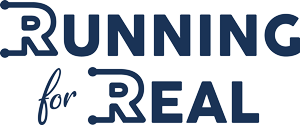“Sport is a vehicle for social change outside of the quarter of the field. We’ve seen sports lead social movements, and I think sport is one of those things that everybody can relate to. It’s one of those things that bind us together, regardless of our other differences.” -Chris Mosier
Who is Chris Mosier?
This week’s conversation is with Chris Mosier, the first transgender athlete to compete for Team USA, first transgender man to represent the United States in international competition, first transgender athlete to qualify for the Olympic Trials in any sport in a category different than their sex assigned at birth, and Chris is the person credited for the International Olympic Committee’s policy change for transgender athletes.
You don’t know what you don’t know.
Chris says a lot of us have a fear of doing wrong because someone might get hurt by what we say, but it shouldn’t prevent us from trying to do our best to step in and be an ally. There’s an idea of intent vs impact where our intent might be good, but the impact might still be hurtful. However, it’s just important for us to acknowledge the hurt we may have caused, and then vow to do better.
Which pronouns should you use?
Learning the terminology is a good first step. For example, misgendering is one of the most common things that happens in the trans community. Mis-gendering is when someone says “she” instead of “he” or, says “he” or “she” instead of“they” for somebody’s pronounce that they use.
Pronouns are how we refer to people when they’re not around. She/her and he/him are the most common ones, and there are people who use they/them as their pronouns too. Most recently, they/them has been approved by the dictionary to say that even though it is plural, it can refer to one singular person.
Chris explains pronouns are personal and we tend to make assumptions about people’s pronouns when we meet them. In the past year, we’ve seen a big push for people to put their pronouns in the bio of the social media, in emails, or in the window of digital meetings so people know what to correctly address you as. He says this is not just for transgender or non-binary people. It’s for everyone especially if cisgender people and allies do it because it opens space for everyone to be addressed how they want to be addressed. You can learn more terminology at transathlete.com
You can’t control other people’s opinions, but you can always control how you respond.
“I realized over time is that I am not responsible for anybody else’s thoughts or opinions. What other people think of me is none of my business,” Chris says, “but what I can control is how I respond.”
You are possible.
In 2010 Chris didn’t think transitioning was possible. He saw the high school and college kids documenting their transitions but didn’t see any adults. Didn’t see people in a mid-professional career. Didn’t see any trans men playing sports with men. He just didn’t know that it was possible.
It took a long time for Chris to even learn about trans identity and to learn the word transgender in a meaningful way. For him to realize it’s a possibility, then explore that with himself.
He knows how women are treated in sport
Chris knows how women are treated in sports because he was treated that way before transitioning. Women weren’t given the same playing time. Women got the hand-me-down uniforms and second rate equipment. The men’s team got celebrated while the women’s team got a brief mention. He shares the mind-blowing statistic that women’s sports only get 4% of media coverage on the whole of all sports.
“I’m really grateful that I’ve had the experience of being raised and socialized as female, competing in sports as a woman and then transitioning to mail seeing how differently I’m treated, seeing all of the harms that are done to women in sports. I think it just gives me this really unique perspective about gender, about power, about masculinity and femininity, and about positioning in the world privilege and all of those things that can help me be a better advocate.”
Chris says we have to understand that athletes come in different sizes, shapes, body structures, types of abilities and athletes receive different support.
How do you compete in sports as a trans-athlete?
In 2020 Chris became the first openly transgender male athlete to compete in an Olympic trial. Even though he had to pull out because of an injury, he said his main goal had been getting to Olympic trials as a way to break the barrier and open the door for the next person who comes after him.
What policies and protections exist?
Chris explains that in terms of trans policies, rules around transgender affect access to housing, protections for young people in schools, and the military. There were a number of harms committed by this previous administration against the trans community including targeted efforts banning trans people from public life. It was a top-down presidential initiative going through the Department of Education, and even Homeland Security. But in terms of political and legislative actions, Chris says we have a long fight ahead of us.
In the running world, when Chris first transitioned, he had to write to the New York Road Runners and ask how he could switch categories. He said nowadays many governing bodies have adopted new policies, and others wouldn’t make the changes until the Olympic level made them. Chris keeps track of these policies on his website, transathlete.com
In terms of public image and media, Chris says we’re seeing positive representation and seeing a celebration of achievements. More people can look and see someone like themselves in the media represented in a positive way or telling their story in their own voice.
What can we do?
While big change lies in the hand of governments and companies, changing public opinion is a wonderful way to get the change to happen. It’s what inspires people to stand up and speak out and say, “This is not what we want, we want equality. We want people to be treated fairly.
We want people to be treated with dignity and respect. And this does not align with our values.”
How you can be an ally.
“Don’t be afraid to engage with trans people and ask questions, respectful questions. The biggest thing is probably thinking about why you need to know that information. And if it’s not something you’d ask any other person in the room probably don’t ask a trans person, but don’t underestimate the impact that you can have in anyone else’s life.”
If you have any social circle– friends, and co-workers, you can make an influence by being a good ally in those spaces that can have a profound impact down the road. Everybody has a role to play– whether it’s in transphobia, homophobia, racial justice, sexism.
Resources:
[podcast src=”https://html5-player.libsyn.com/embed/episode/id/17710841/height-orig/90/theme/custom/thumbnail/yes/direction/forward/height/90″ height=”90″ width=”100%” placement=”bottom” theme=”custom”]
We know there are so many podcasts you could be listening to, but we are honored you have chosen Running For Real. If you appreciate the work that we do, here are a few things you can do to support us:
Thank you to Chris, we look forward to hearing your thoughts on the show.






